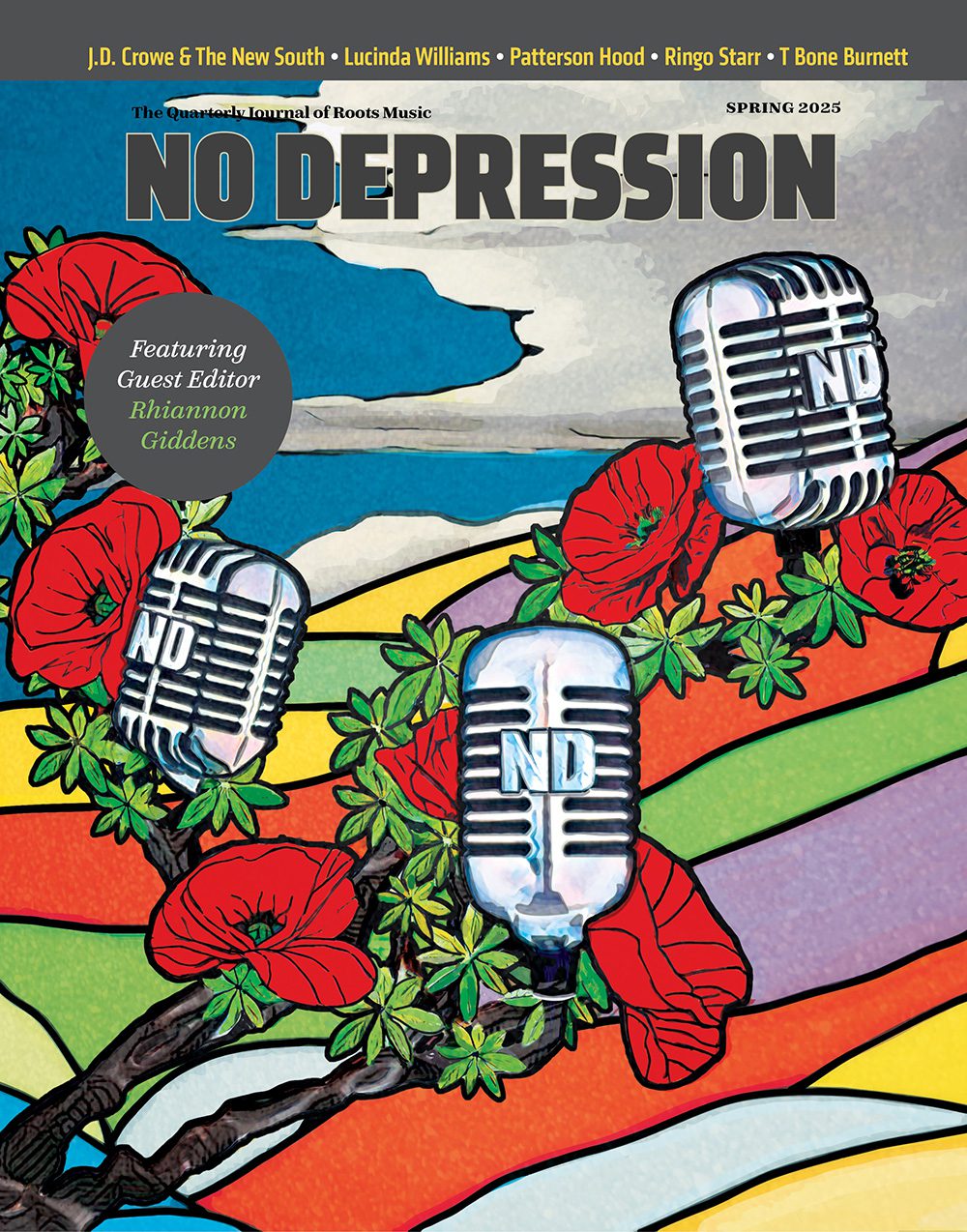Clarence “Gatemouth” Brown – Sittin’ on the dock, with the world at bay
Friday, September 14, 2001. At the University of Wisconsin in Madison, 20,000 people are shoulder to shoulder on the Library Mall, honoring victims of the attacks in New York and Washington. The air is cool, but the sun is high and bright, intensifying all the red, white and blue. A man wielding a tall flag takes bellicose swipes at the sky, and the cops bounce a handful of vociferous protesters, but mostly, solemnity prevails.
A block away, at the base of the student union terrace, the waves on Lake Mendota roll to the breakwater with an easy chug and surge. Sparrows work the terrace for crumbs, their beaks ticking at the concrete, pausing only to flutter from the path of the professional class, which is out jogging over lunch break. The joggers pass in talkative packs, leaving sentence fragments in the air. Today, the fragments are all from the same conversation:
“…relatives on the plane…”
“…which will help with coalition building…”
“…but the people we’ll kill won’t be the ones…”
Up on State Street, the poster kiosks are running heavy to peace rally announcements and reactionary screeds. Somewhere under the new stuff is a poster that says Clarence “Gatemouth” Brown will be playing on University Avenue tonight, at a club called Luther’s Blues. It’s not going to happen. Gate saw the towers come down in New York City, and he’s not getting on any airplanes. Right now he’s in Louisiana. On his porch. Keeping peaceful company with a gator.
Clarence “Gatemouth” Brown was 17 years old in 1941, and on the road, playing music. He was standing on a street corner in Norfolk, Virginia, when someone told him Pearl Harbor was burning. His mother, certain he would be drafted, sent him a letter and told him to come home. They drafted Clarence, but not until ’46, when the war was over. He didn’t care much for the Army. “There was so damn much prejudice…segregated barracks and mess halls…I couldn’t understand how in the hell people could live like that when they were tryin’ to save each other. They wouldn’t let our boys fly no airplanes…it’s hard to describe how the black man was treated. Nobody seemed to give a damn.”
Gatemouth is 77 years old now, and he has seen his nation attacked a second time. He notices the flags are out again. He’s not sure how deep the patriotism runs. “Don’t get me wrong now I feel sorry for what happened to those people. But it’s the funniest thing when things is smooth, nobody likes one another, they hate one another’s guts. But when a crisis happens, everybody hugs one another with all this bullshit sympathy. I mean, why can’t you have respect and concern for each other before? It’s just like Christmas from January to December, everybody is just on your own. But when that one day comes up…”
Born in Vinton, Louisiana, Clarence “Gatemouth” Brown grew up in Orange, Texas, near the Gulf Coast. His father fiddled for friends on the weekends, and at the age of 5, Clarence began backing him on guitar. They played a little bit of everything — regional tunes, French traditionals, German polkas. When Gate was 10, his father started him on the fiddle. During World War II, he got work as a drummer.
He broke from the back of the riser to the front one night in 1947 when T-Bone Walker took sick during a show at the Golden Peacock in Houston and stopped playing, mid-song. Clarence jumped onstage, picked up T-Bone’s guitar, and ripped into his own “Gatemouth Boogie”. In fifteen minutes, as the story goes, the crowd tipped him $600.
Club owner Don Robey hired Brown, became his manager, and put him on tour with a 23-piece orchestra. Soon he was signed to Hollywood label Aladdin Records. Dissatisfied with Aladdin’s promotional efforts, Robey launched his own Peacock Records label. Brown had several hits with Peacock, including his signature “Okie Dokie Stomp”.
Drawn to Nashville in the 1960s to take part in a local R&B television show, Brown recorded a number of country singles. He spent much of the ’70s in Europe, where he recorded nine albums. He also toured the world on behalf of the U.S. State Department, taking his American music to locations ranging from Botswana and Madagascar to the Soviet Union.
In the late ’70s, Brown moved to New Orleans and teamed up for an MCA album with Roy Clark. The Clark project led to joint appearances on “Hee Haw” and “Austin City Limits”. In 1982, his album Alright Again! (Rounder) won a Grammy for Best Traditional Blues Recording, and Gate received the W.C. Handy Blues Award for Instrumentalist of the Year. Eventually, there would be seven Grammy nominations, nine Handy awards, and a Pioneer Award from the R&B Foundation. Brown continued to tour through the ’90s and into the millennium, with stops in New Zealand, Australia and Central America, again on behalf of the U.S. government.
For 72 of his 77 years, Brown’s career has unfolded over a shifting geography of place and sound, yielding a body of work nearly impossible to categorize. Read the bios and press clippings and you’ll find references to blues, roots, jazz, cajun, calypso, zydeco, bluegrass, country, funk and swing. Ask Gatemouth, and he’ll call it bayou swamp rock. Or border-type country. Or American and world music. Or American music, Texas-style. He plays, and leaves the sorting to others. Someone once said his country licks didn’t sound country. “What country you talkin’ about?” asked Gate.




